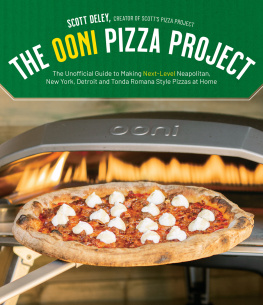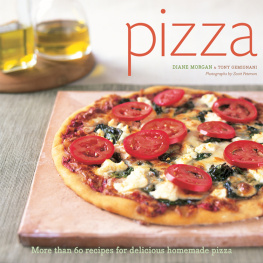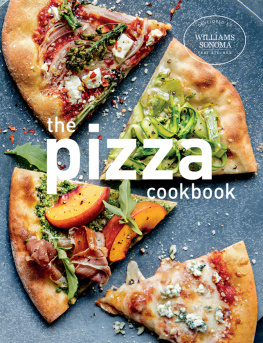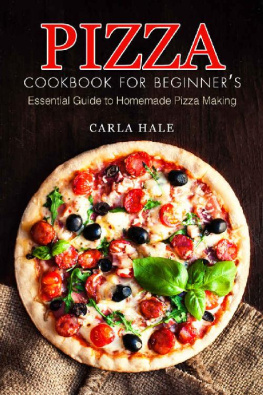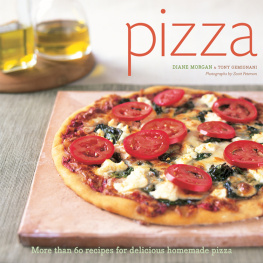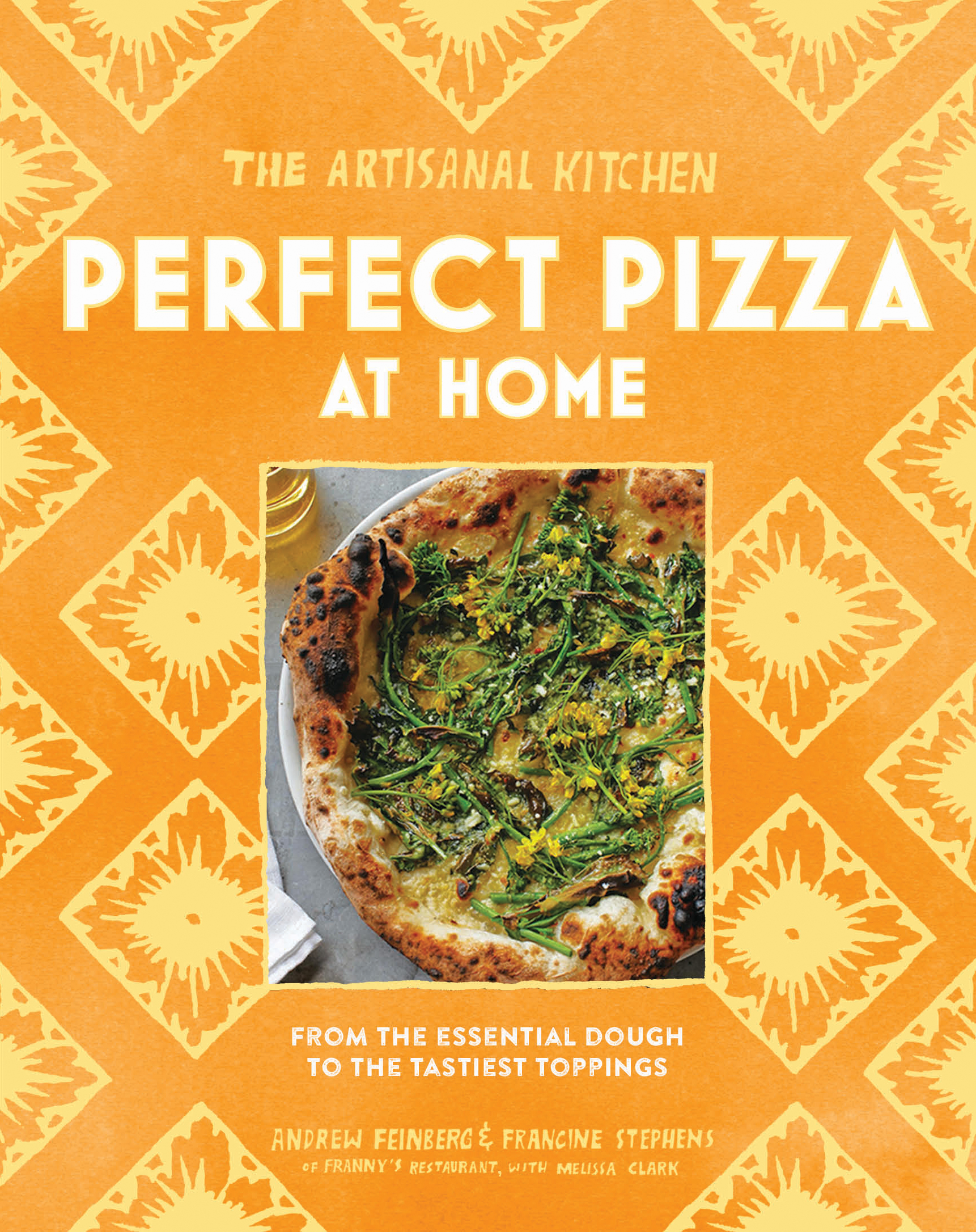
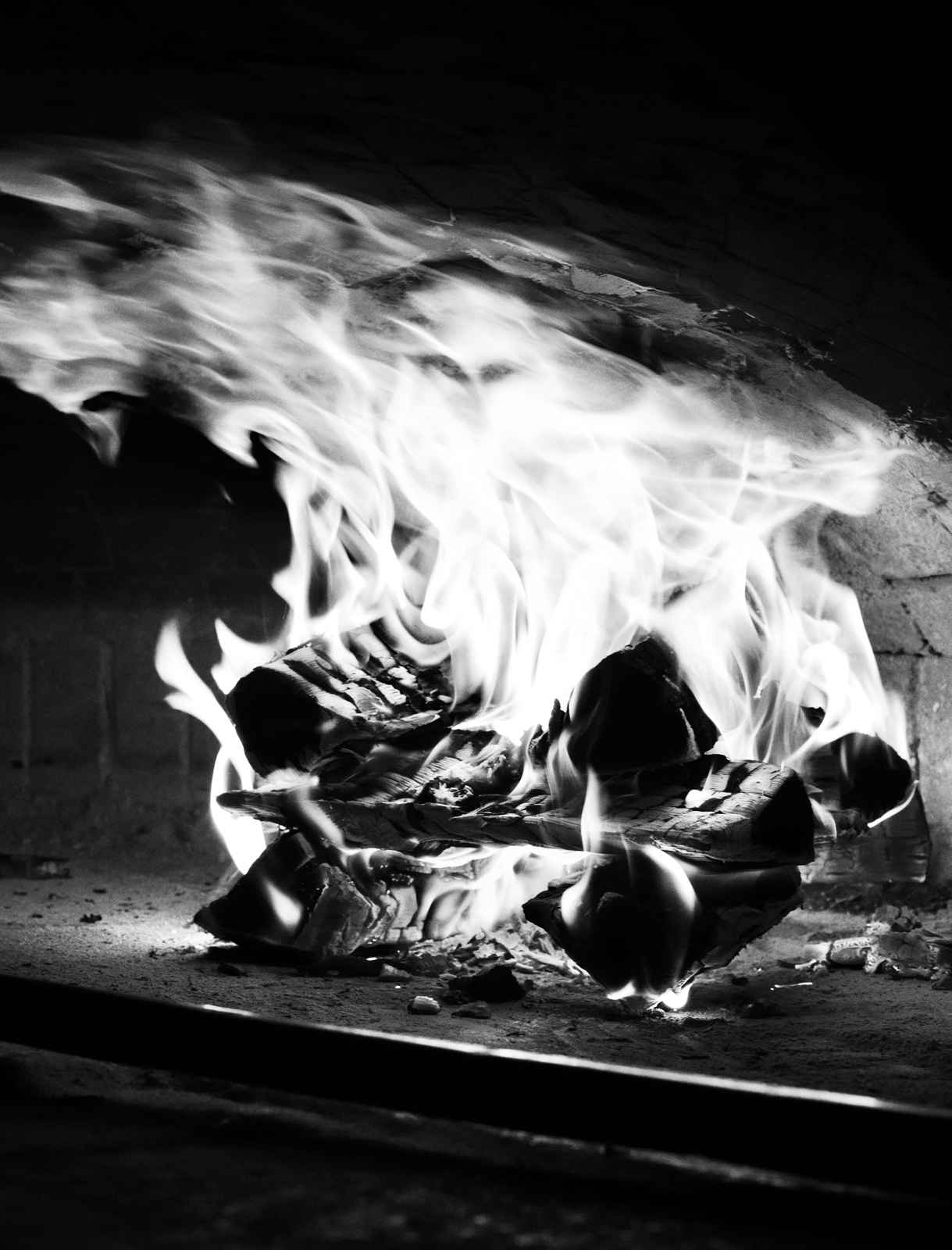
Also in This Series
The Artisanal Kitchen: Perfect Pasta
The Artisanal Kitchen: Vegetables the Italian Way
The Artisanal Kitchen
Perfect
Pizza
at home
from the essential dough to the tastiest toppings
Andrew Feinberg & Francine Stephens
of franny's restaurant
with Melissa Clark

Artisan New York
Contents
Introduction
Pizza just might be the perfect food, a magical substance that pleases most people, of most ages, most of the time. People never seem to tire of pizza. My husband, Andrew, and I have been eating at our restaurant, Frannys, as a couple and then as a family, many times a week for the several years weve been open. And I can honestly say that I have never gotten sick of pizza. Neither have our regulars. Whether its a quick solo bite at the bar on the way home from work, a date-night feast, or a weekend lunch with out-of-town guests, a meal at Frannys always (or nearly always) seems to include at least one pizza.
That was part of the plan when we opened. We wanted to create a place where our friends could come every nightwhere people would crave the food and want to come back again and again. So far, so good. And once we came up with the idea of opening a pizza restaurant, it seemed obvious.
The concept was a givenbut getting the pizza itself right was another matter. Other than a love of pizza and our trips to Italy, we didnt have a lot to go on. When we opened Frannys, we were at the forefront of a pizza renaissance. While there are now artisanal, wood-fired, brick-oven pizza restaurants in San Francisco, Los Angeles, Seattle, Chicago... virtually everywhere, when we opened, there were only a handful. We love that we caught this new-style pizza wave right at the beginning.
Before we opened in our original space, we hired a third-generation brick-oven builder from Naples to build our hulking brick oven, and then we got to work. When Andrew looks back on the early days of Frannys, he is genuinely appalled: we opened a restaurant based on a food that we didnt really know how to cook. (Chalk it up to youthful navet and optimism.) For the first few weeks after we opened, Andrew rolled out the pizza dough with a rolling pin, and the result was all wrong; the rolled-out crusts were crackery and dry. And he cooked the tomato sauce on the stove, as you would for pasta, which stripped it of all its complexity and vibrancy.
But one of the many things I love about Andrew is that he is always researching, reading books, tweaking, experimenting, and not resting until a dish is right. He and the other folks in the kitchen taught each other how to cook pizza, handing knowledge back and forth. The recipes and techniques in this book, all of which are based on traditional Neapolitan-style pizza, represent years of experience.
The pizza made in Naples is taken so seriously in Italy that some pizzas have been designated with governmental protection. To be called a pizza Margherita in Italy, a pizza has to meet strict guidelines that govern everything from the type of flour used in the dough to the temperature at which it is baked. True Neapolitan-style pizza is soft throughout (the dough is tender and chewy), and theres a restrained amount of cheese and sauce (both of very high quality). Overall, pizza in Naples is a subtler affair than pizza in America. While Andrew and I respect and admire authentic Neapolitan pizza, and have learned so much from it, weve ultimately gone our own way. Our pizza is a little bit different from anything youd find in Naples, or anywhere else in this country, for that matter.
Of course, the foundation of any pizza is the dough. Ours is yeasty and deeply flavorful, with just the right balance of crispness and chewiness. Stretching the pizza out by hand means it puffs spectacularly in the hot oven and forms a few large bubbles around the edges, which take on a crackling black char. The key to the flavor and texture is using a small amount of yeast and letting the dough rise slowly in the fridge, where it has a chance to develop complexity and nuance. We strongly advise against using instant yeast to hurry things along. Patience, weve learned, is part and parcel of making great pizza.
Then theres the sauce. It turns out that the easiest sauce is in fact the best. Taking our cue from Naples, we puree high-quality canned San Marzano tomatoes, then season them aggressively. Thats all you need for a bright, lush sauce, and it couldnt be simpler to do.
When it comes to the toppings, theres plenty of room for creativity. But whatever you choose to put on your pizza, use a light hand. You want balance: balance between the sauce and the dough, between the cheese and the anchovy, and so on. Some of our pizza toppings are as traditional as can be (see our version of a ), in keeping with our overall philosophy.
Whatever the ingredients we put on our pizzas, we make sure they are superb. We buy the best cheeses we can find, and theyre worth every penny. For most of our pizzas, that means buffalo mozzarella, which adds a distinct creamy complexity and depth of flavor. For more elaborate pizzas with other meats, you can use either buffalo mozzarella or a good-quality fresh cows-milk mozzarella. Weve done it both ways, and while weve ultimately come to prefer the more pronounced taste of the buffalo, the buttery milkiness of the cows-milk cheese next to the pungency of sausage or meatballs is also marvelous. As long as the cheese you buy is fresh and well made, whichever mozzarella you choose will be delicious.
Pizza is a great blank canvas for whatever you love, so feel free to change things up to suit your taste. Skip the capers if youre not a fan, or pile them on if you are. Or swap out roasted eggplant for roasted peppers or add olives or anchovies to the . Follow the recipe to the letter, and youll be bowled over by its gorgeous, briny perfection.
For baking pizza at home, we came up with a method using a conventional oven that results in a close approximation of the puffed, charred pizzas you get from a wood-fired brick oven (though without the wood-smoke flavor). You do need a pizza stone. If you dont have one, buy the thickest, sturdiest one you can find. Preheat the stone in a 500F oven for an hour. When you slide in your pizza, the fierce heat from the stone will immediately start baking the bottom crust. Then, after 3 minutes, turn off the oven and turn on the broiler, which will blister the top of the pizza, so your pizza is basically cooked from both top and bottom.
If your oven has a separate broiler, you can still use this technique, but it will require an extra step. After cooking the pizza on the stone in the oven, preheat the broiler. Use tongs to move the half-baked pizza onto a baking sheet and run it under the broiler until the top of the pizza browns, about a minute or two. The results will be just as good.
All of the recipes in this book make four individual pizzas. At the restaurant, its rare for a table of four to order, say, four sausage pizzas or four white pizzas. People order an array of choices, since pizza is ideal for sharing (another part of what makes it so appealing). At home, you could do the same thing and improvise four different pizzas. Dont feel hemmed in. Make the dough and then top each round individually and separately.
For example, you could start out with an as the cheese course. Get the kids involved in the process, letting them help top the pizza. Its just the kind of cooking that kids love to be a part of. And theres no need to fret about timing. Share each pizza as you make it, and no one will go hungry waiting. (If youre lucky enough to have a dual-oven setup in your home kitchen, buy two pizza stones and make two pizzas at once!)
Next page

